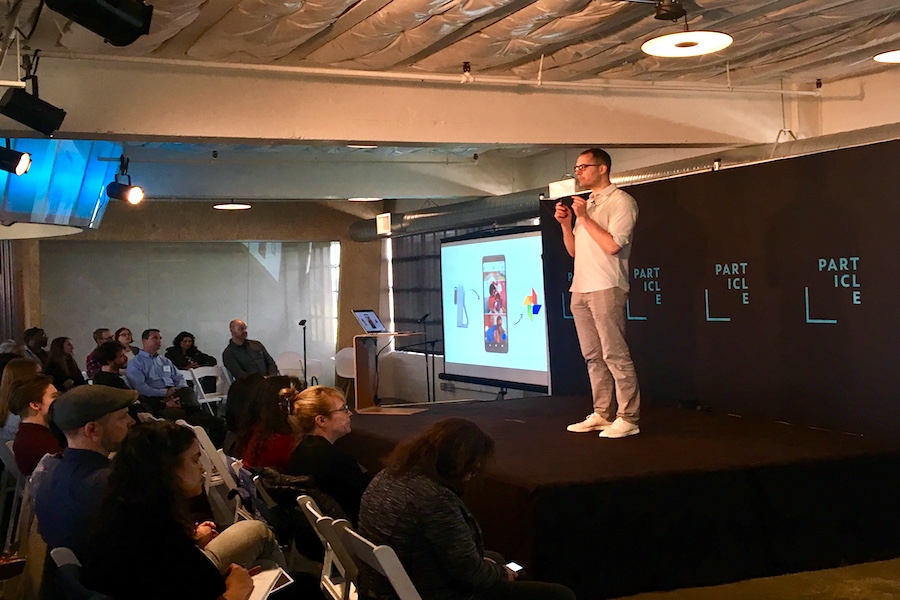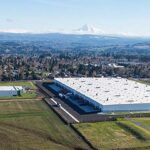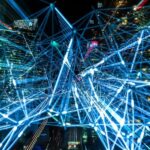Design Week Portland event highlights challenges and opportunties for AI.
The robots are coming, and even their creators are concerned about what they can do.
Tech leaders discussed the challenges and opportunities for Artificial Intelligence during a Design Week Portland event last night. Particle Design, a user design firm that’s worked with Dreamworks and moovel, hosted the talks at its Southeast Portland Headquarters.
Grim AI news has been piling up recently. Congress grilled Facebook CEO Mark Zuckerburg for ten hours over the Cambridge Analytica scandal. An autonomous vehicle killed a pedestrian in Tempe.
 Particle Design CEO Crystal Rutland charts the evolution of user interface design.
Particle Design CEO Crystal Rutland charts the evolution of user interface design.
In the wake of these events, speakers appeared wary of the power of their creations.
A Google designer worried that we’re not getting enough face time. “We live in this duality space,” said Josh Lovejoy, who heads user design for Google Clips. “In the rush to document and remember we live much of our lives on a screen.”
Particle CEO Crystal Rutland skirted the big AI ethics questions. But she hinted at the Facebook and Tempe woes. “Good user design,” she said, “can make the difference between someone being happy and someone leading a campaign to delete your app.”
Both speakers remained bullish on AI’s potential. Driving and making safety decisions, Rutland said, “are roles that need to be replaced by autonomy.”
Some cities scaled back on AVs after the Tempe crash, but not Oregon. A Department of Transportation task force on autonomous vehicles convened in Salem this morning.
Rutland walked through a brief history of computer design. In the beginning was a command interface—lines of code.Next up: a graphic interface with little icons. The iPhone debuted the natural interface, requiring swiping, pressing and zooming with our fingers.
The next revolution, Rutland said, will be cognitive interface. Our computers will behave more like our own brains.
Lovejoy did his best to allay fears of automation. “Machine learning can’t do anything a human can’t do,” he said.
Google Clips, a smart camera, automates videography. It identifies your kids and dogs, and takes seven-second clips of them. It can discern good lighting from bad lighting. It knows when your hand is covering the lens.
Then it wades through the thousands of clips and picks the best ones to show you.
“The job of AI should not be finding a needle in the haystack,” Lovejoy says. “It should be pushing as much hay away as possible so we can find it.”
Good AI design, Lovejoy said, leaves in a human element. Instead of choosing all the best photos, the camera shows users a range of good and bad. The human operator makes the final call.
“The job of AI should not be finding a needle in the haystack,” says Lovejoy. “It should be pushing as much hay away as possible so we can find it.”
To subscribe to Oregon Business, click here.







